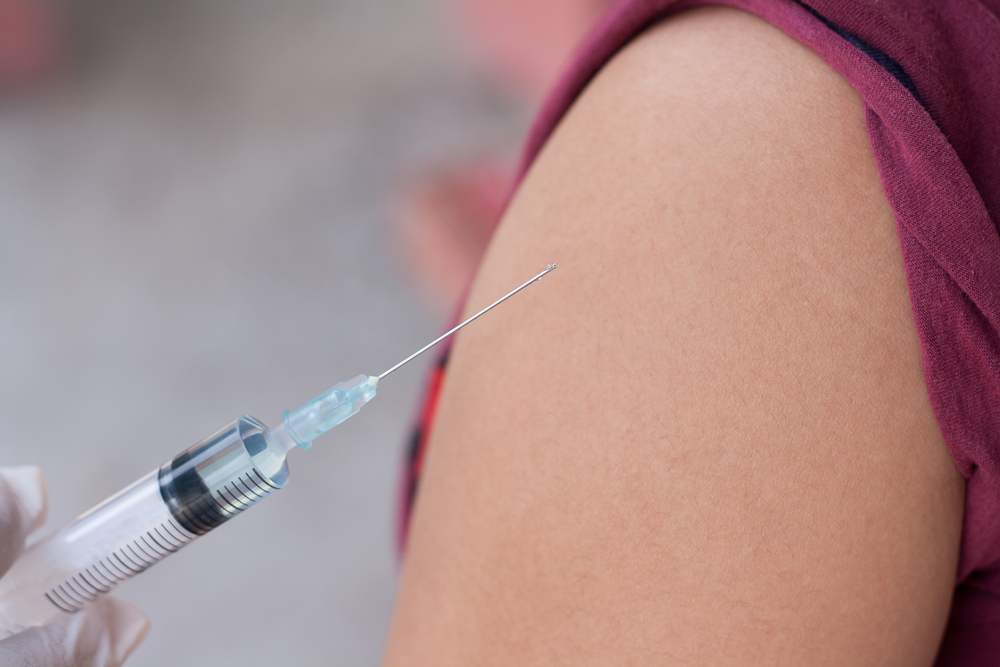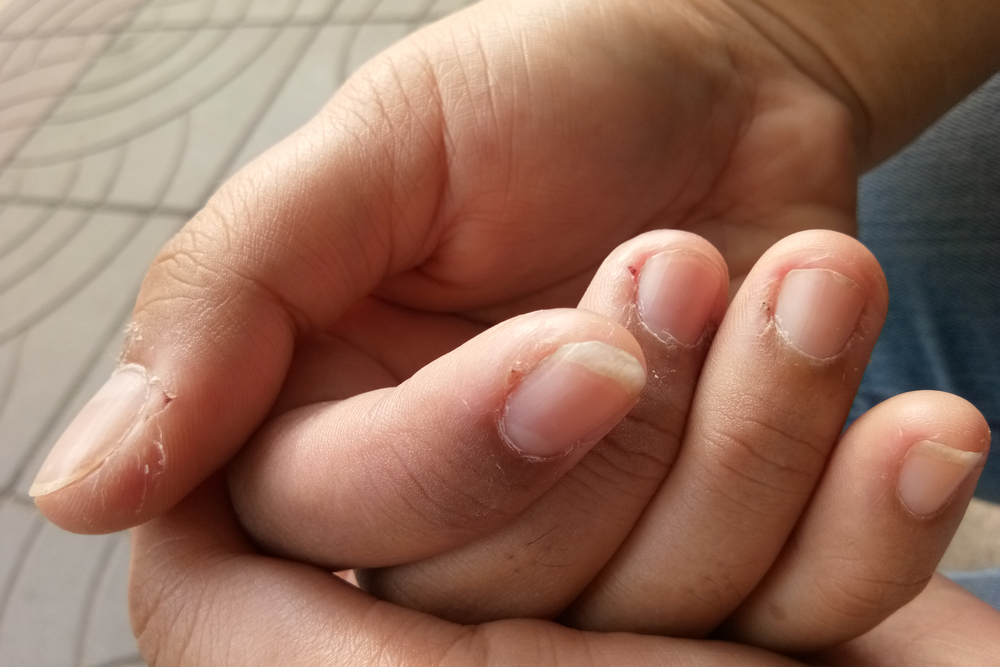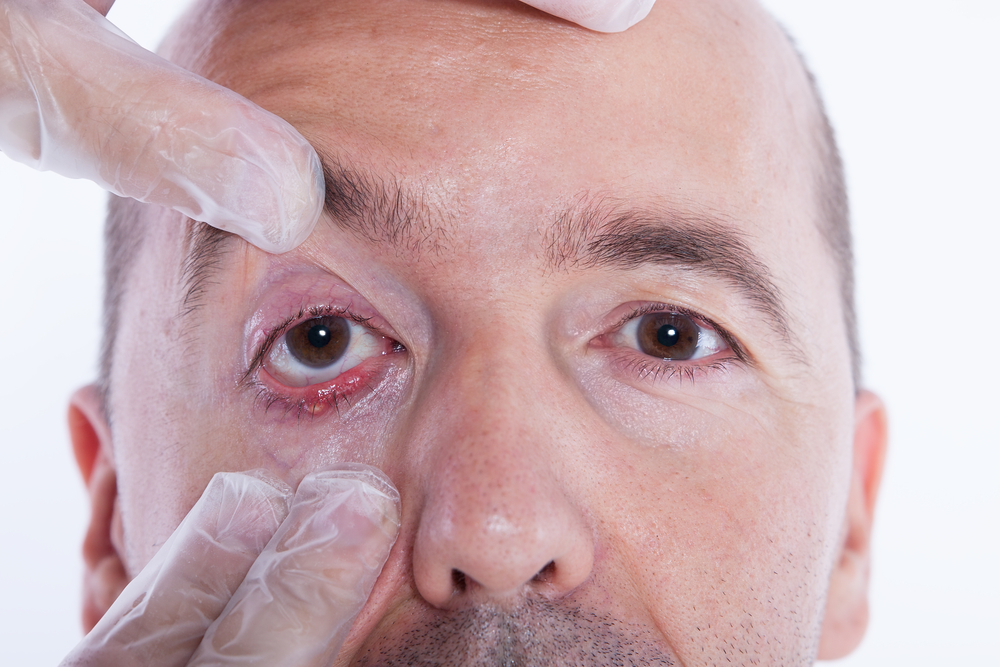- Shingles first appears as painful blisters on the skin but can end up having serious long-term effects.
- Anyone who has had chickenpox can get shingles – 95% of adults are at risk.
- Shingrix® is a new vaccine that could prevent 97% of all shingles cases.
The Centers for Disease Control and Prevention (CDC) estimate that 1 in 3 people will get shingles at some point in their lifetime, adding up to 1 million new cases in the United States each year.
Shingles is caused by the same virus as is chickenpox: varicella-zoster virus (VZV).
Most people get chickenpox in childhood. Although you recover from the disease, the virus remains in your body. It hides in the spine and lays dormant indefinitely. It can become active again, later on in life, as shingles.
Shingles is also known as herpes zoster. The word “zoster” comes from the Greek word for “belt” or “girdle.” When the virus reactivates, it spreads through nerves and causes a rash that can resemble a red belt.
How Dangerous is Shingles?
The CDC points out that half of older adults underestimate how serious shingles can be.
These are some of the symptoms:
- Painful, itchy, unsightly blisters that spread all over the face, back, or chest.
- Excruciating nerve pain that won’t go away for months, even years.
- The impending danger of losing your eyesight or your hearing.
Shingles is extremely painful. The initial rash can last for weeks, and once it goes away you may be left with scars or a skin infection. But that may not be the end of it – chronic unrelenting nerve pain, also known as post-herpetic neuralgia (PHN), is more common in the elderly. It’s hard to treat and sometimes stays for life. PHN interferes with daily activities, compromises emotional well-being, and puts you at higher risk for anxiety and depression.
In addition, shingles can cause eye or ear damage. “The presence of shingles anywhere on the scalp, forehead, or face can cause trouble for your eyes. In my 30-year ophthalmology career, I have witnessed the havoc wreaked upon the human eye by shingles,” says Dr. Alan D. Mendelsohn, FACS, an ophthalmologist based in Miami, FL.
Shingles can also destroy nerves and in rare cases can result in pneumonia or meningitis.
How Do You Get Shingles?
If you’ve had chickenpox, you can get shingles. In fact, more than 99% of Americans over the age of 40 have had chickenpox. The virus is more likely to reactivate when your immune response weakens, which can accompany aging or chronic health problems.
Your risk for shingles increases after the age of 50, becoming even more serious after the age of 60.
The virus that causes shingles is contagious. If you have shingles, you should avoid pregnant women as well as children who have never had chickenpox.
Shingles, herpes zoster, is not to be confused with genital herpes, known as herpes simplex. Genital herpes is sexually transmitted, unlike shingles, and is caused by an entirely different virus.
What Shingles Vaccines are Available?
Until recently, the only shingles vaccine available was Zostavax®, approved by the Food and Drug Administration (FDA) in 2006.
The approval of Shingrix® by the FDA in 2017 was exciting news. Not long after, the federal committee of vaccine experts at CDC started recommending Shingrix® over Zostavax®. Large clinical trials attest to the superior efficacy of Shingrix®, which is also approved in Canada.
Shingrix® should be available in pharmacies nationwide. Dr. Mendelsohn tells us that for the first time even the American Academy of Ophthalmology (AAO) is recommending Shingrix®, but most pharmacies haven’t stocked up yet.
“I myself plan to have the vaccine, something I never considered prior,” he says. “And my patients whose spouses or friends have suffered from shingles are super-anxious to have the vaccines as well. The biggest issue is access. Our local CVS and Walgreens do not have it in stock. So even though I have a prescription from my primary, and it is covered by my insurance, I currently have to check back in a month to have the vaccine.”
So what’s the difference between the two vaccines?
Shingrix®
Shingrix® is a recombinant vaccine manufactured by GlaxoSmithKline. It does not contain the actual live virus, but rather a piece of its DNA. This DNA fragment is combined with an adjuvant to boost immune response.
Shingrix® is injected into the muscle in two doses, 2 to 6 months apart.
Zostavax®
Zostavax® is a live vaccine manufactured by Merck. The virus is treated to become weak, making it powerless to spread in the body. It’s actually the chickenpox vaccine (Varivax®) but about 14 times stronger.
Zostavax® is given in one dose under the skin.
Who Should Get the Shingles Vaccine?
The CDC recommends Shingrix® if you are 50 years old or older and even if you:
- Have had shingles before.
- Received Zostavax® previously.
- Are unsure if you have had chickenpox.
You will benefit from Shingrix® even if you suffer from a chronic disease, such as high blood pressure, diabetes, psoriasis, arthritis, or others.
You can still use Zostavax® if you:
- Are 60 years old or older and healthy.
- Are allergic to Shingrix®.
- Need to be vaccinated immediately, but Shingrix® is unavailable.
Who Should Not Get the Shingles Vaccine?
You should not receive Shingrix® or Zostavax® if you:
- Have severe allergies to the vaccine or to any component of it. (Zostavax® contains gelatin and the antibiotic neomycin.)
- Are pregnant or breastfeeding.
- Are not feeling well, have a high fever (101.3°F or above), or any serious illness.
- Currently have shingles.
- Have old lab tests confirming that you have never had chickenpox.
- Have a very weak immune response.
Weak immune response may be caused by undergoing chemotherapy or radiation; complications due to HIV/AIDS; blood, lymph node, or bone marrow cancers; and/or drugs, like steroids, that weaken immune response. Those with a weakened immune response might be able to get Shingrix® in the future.
Shingrix® is still safe for people on lower doses of drugs that decrease the immune response.
How Does the Shingles Vaccine Work?
Vaccines in general work by teaching your body how to fight a virus. When you get a vaccine, your body is receiving a very small dose of an actual virus. In response, your body creates a new “immune memory” for that virus, building up experience and strategy.
If later you actually encounter the virus, the immune memory is activated, and your body is reminded how to fight it. Your body already knows what to do and is able to get rid of the virus before you develop severe symptoms.
If you haven’t been vaccinated, it’s like jumping into the unknown. Your immune system is faced with a dangerous threat for the first time and is unsure how to react. Sometimes it succeeds, sometimes it fails. If it fails, the results can be catastrophic, or even fatal.
The difference between the two shingles vaccines is in how they train your body to respond:
- Zostavax® takes a more traditional approach. It activates your immune system by using a weakened dose of the actual virus. But this weakened virus makes less of an impression on your immune system, so the effect fades away more quickly.
- Shingrix® takes a smarter approach, using only the most important elements of the virus to elicit a response. Plus, it has an added immune booster that helps your body to remember its response for a much longer time.
How Effective Is It?
The Shingrix® vaccine produced striking results in a huge clinical trial of 37,000 patients. It prevented shingles in 97% of healthy adults in their 50s and 60s, and 90% of people in their 70s and 80s.
Zostavax® has been shown to protect less than half of healthy adults in their 60s, about one-third of people in their 70s, and one-fifth of people over age 80.
Dr. William Schaffner, a preventive disease specialist based in Nashville, TN, said that “[Shingrix] has spectacular initial protection rates in every age group. The immune system of a 70- or 80-year-old responds as if the person were only 25 or 30.”
Furthermore, Shingrix® is better at preventing PHN, protecting 90% of adults, compared to 65% for Zostavax®. If most people over age 50 received Shingrix®, it could eradicate PHN with time.
How Long Does Protection Last?
Shingrix® will still protect 97% of people during the first year, and 80% of people after 4 years. It has not been in use long enough to know how effective it will be after 10 years.
Zostavax® will protect less than half of people during the first year, and only one-third after six years. In about 10 years, it loses its efficacy.
Real-world use of Shingrix® is still limited, as all participants in clinical studies were healthy elderly Caucasians. Studies of Zostavax® also didn’t include ethnic minorities or sick people, but more safety data has been collected since patients began using it in 2006.
Are There Any Side Effects?
Side effects for both vaccines are mild and usually go away in a few days.
You are likely to feel pain, redness, or soreness where the shot is administered (usually the upper arm). Other side effects were more common to Shingrix® than to Zostavax®, such as muscle and joint pain, fever, nausea, and fatigue.
Severe allergic reactions are rare but require immediate attention.
Shingles vaccines do not contain mercury.
How Much Does It Cost?
The proposed price for Shingrix® is $280 in total, $140 per shot, whereas Zostavax® costs about $223. However, a recent analysis claims that Shingrix® is more cost-effective, as it reduces complications, lasts longer, and protects more people.
Medicare Plan D will cover Shingrix® (like Zostavax®), making it easier to get reimbursement at the pharmacy rather than at a doctor’s office. Both are likely covered under private health insurance; contact your insurer for details. There may be a cost or co-pay depending on your plan.
Pharmaceutical companies may offer assistance to people who can’t afford the vaccines.









